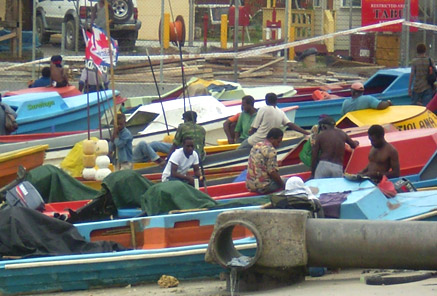Solomon Islands
Geography
Land Use
People
Economy
Water Statistics
|

Status of Water Resources
Water resources availability ranges from sizeable rivers to small streams from high mountainous and dense rainforest islands to rainwater harvesting and thin fresh water lens of underground aquifers of the small low-lying atolls and islets. Rainfall and river flows are highly variable in certain areas; drinking water supplies may run short one month, yet a few months’ later roads and gardens may be threatened by floods. In the outlying atolls of the Solomon Islands, where rainfall is low and there are only limited supplies of groundwater. Even where water resources are abundant they may not be suitable for a particular use, such as human consumption.
Problems with Water Resources and Associated Environment Issues
- Extent of exploitation of water resources
With an estimated population of 400,000 in 1999, about 14% live in six urban areas including Honiara and the balance of about 86% of the population live in rural areas while the rest live in urban and peri-urban areas. Information to date revealed that about 50-70% of rural population has access to piped or improved water supply while coverage in urban areas is about 80-90%.
- Demands on watersheds/water resources
Drinking and household use in both rural villages and in urban centres is the major use of water resources in the country. Although the quantities required are relatively small the quality of the raw water must be high due to non-presence of expensive treatment for the water supply. There is limited agricultural water demand because most crops are rain fed or watered direct from groundwater sources. The agricultural developments of Guadalcanal plains have shown the potential for irrigation especially in the small holder rice farming activities. Furthermore, with the increase in the population (approximate annual growth rates placed between 2.8 and 3%) there is a need to increase the supply of water in urban and rural areas. In this case better water quality and quantity is needed for the country to meet the increasing population in the near future.
- Competing uses of water
Current Information suggests that about 50-70% of rural population have access to piped or improved water supply while coverage in urban areas is about 80-90%.
- Sources of pollution of surface water, groundwater, coastal waters
- Information exchange on water resources
Diagnostic Report
Demonstration Proposal
Hot Spot Analysis
Information on this page obtained from Integrated Water Resources Management programme's Diagnostic Reports (SOPAC 2007)
Demonstration Proposal
Hot Spot Analysis
Information on this page obtained from Integrated Water Resources Management programme's Diagnostic Reports (SOPAC 2007)
© 2024 SPC Water, Sanitation and Hygiene. All rights reserved.